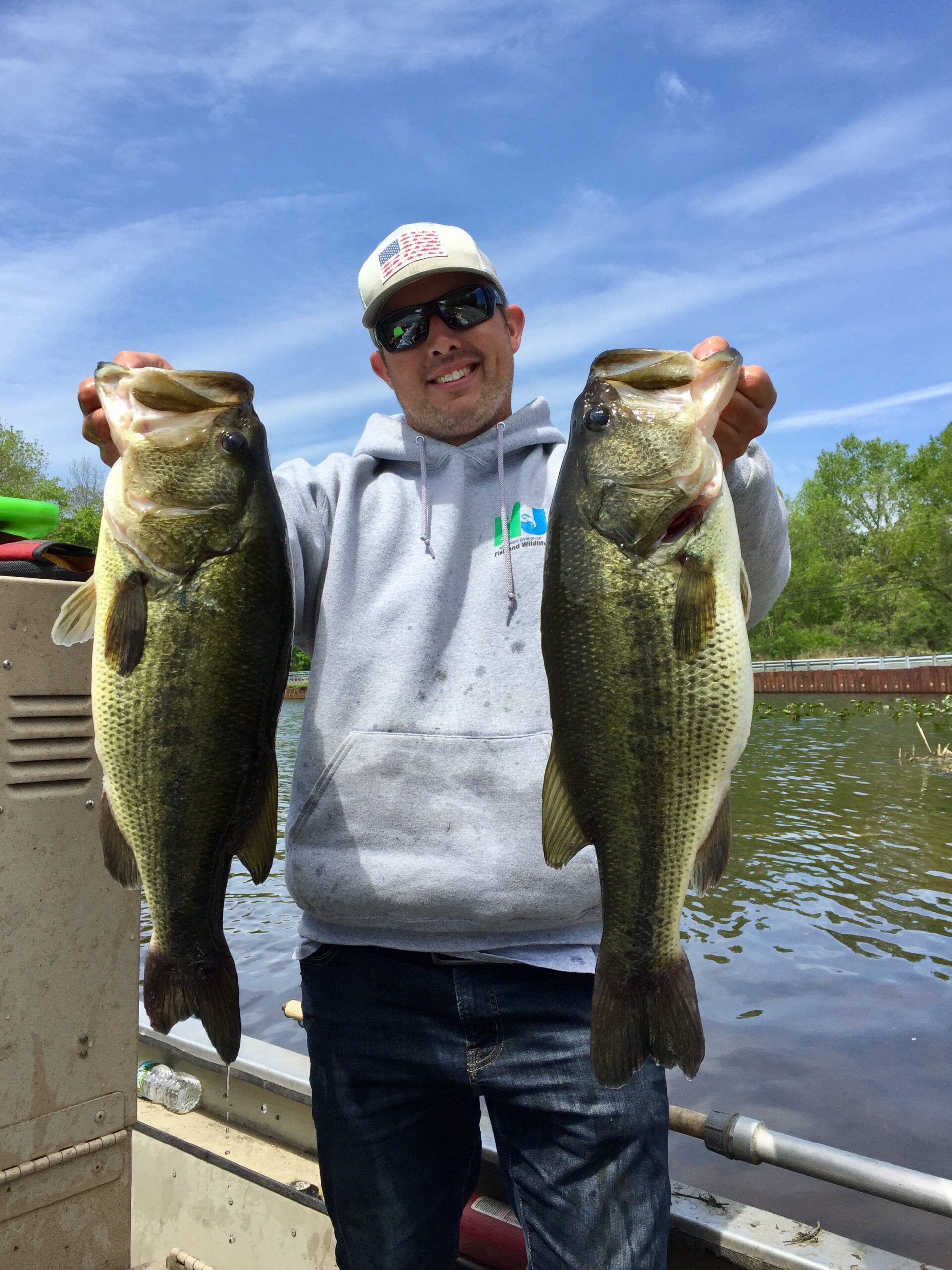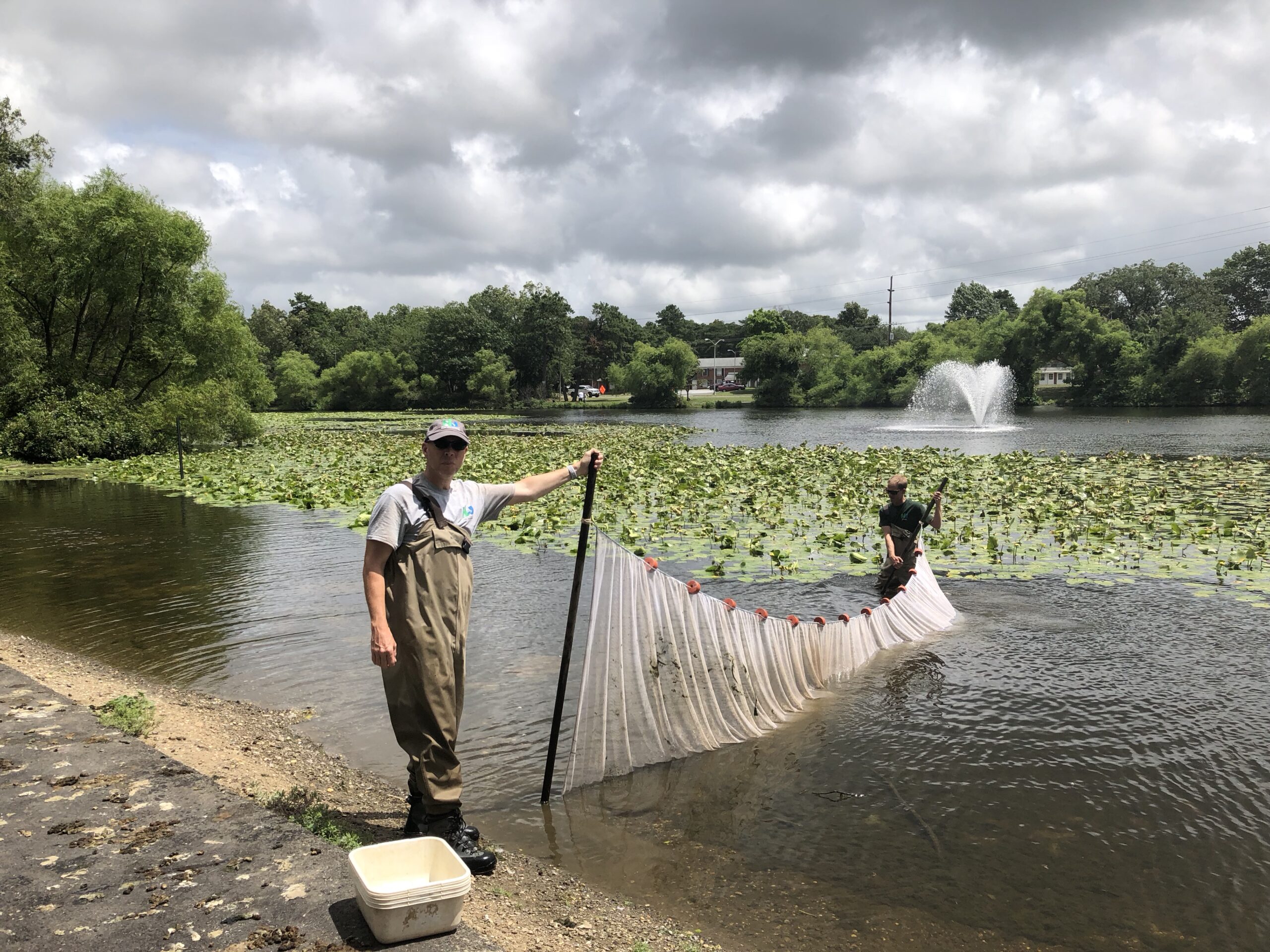New Jersey has over 400 impoundments open to the general public for fishing and thousands more in private ownership scattered throughout the state. These lentic environments offer excellent fishing opportunities for a variety of species such as bass, sunfish, crappie, and pickerel. These species naturally reproduce in the waterways and often do not require active stocking to sustain their populations. The NJFW conducts abbreviated fisheries surveys on lakes and ponds throughout the state to assess the status of popular game species, compared to full inventories on others.
Lake Inventories

Successful management of New Jersey’s warm and cool water fisheries resource is based upon specific knowledge of their physical, chemical, biological, and use characteristics. Such knowledge may serve to direct immediate management recommendations or be used as a baseline, upon which to recognize future changes, requiring remedial management efforts. Under this activity physical, chemical, and biological data is collected utilizing standard sampling techniques. Physical parameters include morphometry, bathymetry, access, watershed, and aquatic vegetation characteristics. Chemical parameters include general water chemistry and sediment nutrient characteristics. Biological parameters include fish species composition, abundance (catch-per-unit-effort), length frequency distribution, and calculated indices of population structure and dynamics such as proportional stock distribution (PSD), relative weight (Wr), age, and growth. The data are analyzed, and results are used to develop management recommendations and prepare an individualized fisheries management plan for the waterbody. These plans are summarized and published for dissemination to the angling public.
Electrofishing
Electrofishing surveys are conducted at various waterbodies throughout the state to assess the status of our fisheries resources. The Bureau of Freshwater Fisheries annually samples dozens of lakes, ponds and reservoirs to assess bass populations. Lakes are assessed based on the catch per unit effort (CPUE) as determined from electrofishing surveys. CPUE is the number of fish caught per hour of electrofishing. Populations are further evaluated utilizing stock distribution indices that provide a numerical descriptor of length-frequency data. Sampling results are used to determine if supplemental stockings or adjustments to current regulations are necessary.
Seining
Seines are an effective sampling method used to assess the status of warmwater fish reproduction, which aids in the management of their fisheries and helps assess stocking success or need. Seines also provide a means to sample fish populations in waters that are not easily accessible or conducive to standard electrofishing methods, such as waters with extremely low conductivity. The data gathered from seining surveys is also beneficial in documenting the presence of unique native species as well as invasive species, that can often be missed when sampling with other gear types.
Trap Netting

In New Jersey, trap nets are primarily utilized for broodstock collection of Northern Pike, Walleye, and Muskellunge, and to assess their stocking programs. They consist of a heavy mesh net strung between rectangular frames forming a square “bag” or “pot” to hold entrapped fish. A long single panel of similar mesh is attached to the bag and is stretched and anchored out away from the bag to guide fish into the device. The entrance of the bag is typically a series of funneled openings to reduce escapement. Two shorter mesh “wings” are often attached at angles to the bag to further guide fish. Floats along the top, and a heavy lead line along the bottom of the “lead” and “wings” keeps the net extended and open through the water column. Trap nets are heavy and deployed and set from the bow of a boat. They come in a variety of sizes often named for the state that originally requested or established a certain size net’s use – Pennsylvania, South Dakota, Wisconsin, etc.
Trap nets are set along the bottom of shallow areas of lakes and reservoirs, usually in areas just slightly deeper than the height of the net. For navigation and retrieval purposes nets are visually marked with buoys. Similar to electrofishing mortality with trap net use is quite low. They are selective towards certain species, but less selective than gill nets.
Gill Nets
Gill nets are a passive capture method that require fish movement to be effective. Hybrid Striped Bass, Catfish, perch, herring, pike, trout, and even shad are particularly vulnerable to capture with gill nets while species such as bass and sunfish tend to be more apt to avoid capture with gill nets. Gill nets are horizontal panels of netting, strung between an upper float line and a heavy bottom lead line. The bottom end of each net is weighted with an anchor, and the end of the top float line is marked with a buoy above the waterline. Typically, gill nets are set long the bottom of a lake or river, but can be suspended in the water column depending on the species targeted. Gill nets are either made of monofilament or multifilament mesh.
Gillnets are an effective sampling gear in most habitats, however unlike other passive and active gear types, gill net can have a high level of mortality associated with their use and are usually reserved for sampling at depths greater than those effectively sampled through electrofishing. Targeted surveys may utilize specific mesh size to capture the targeted species.
 Official Site of The State of New Jersey
Official Site of The State of New Jersey


